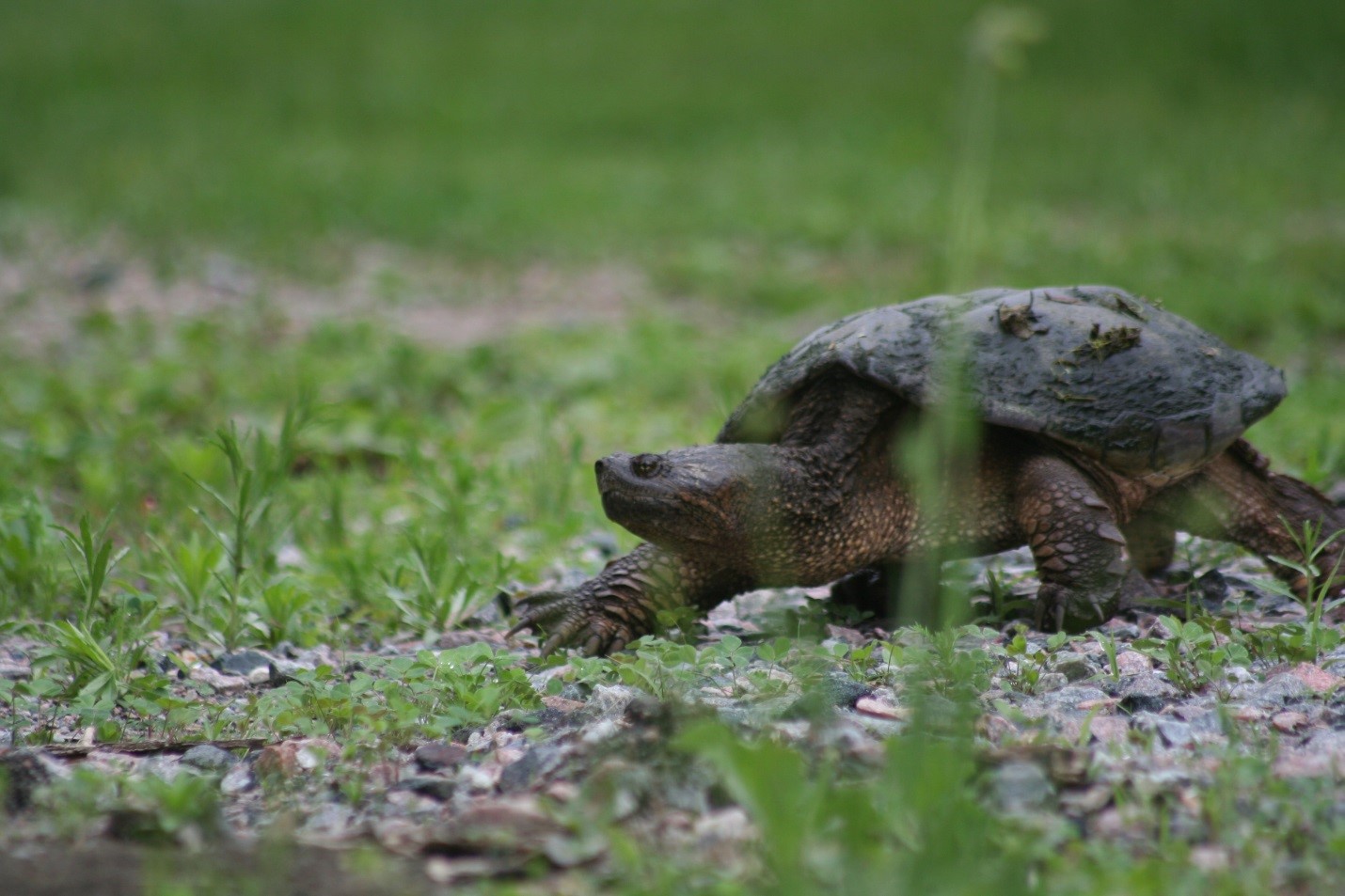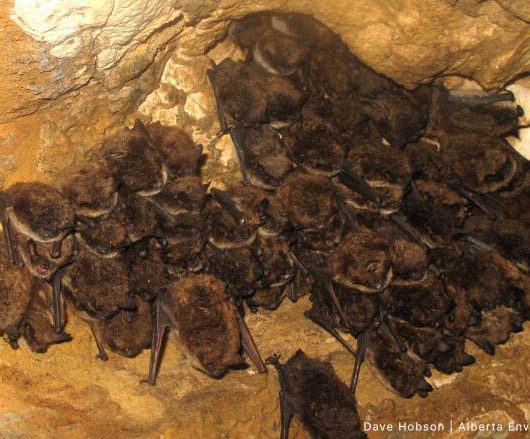When it rains it pours. How can we help bats with this new threat?
Canada is home to 19 different species of bats and each and every one of them are important to our environment and also our economy.
When the sun goes down, bats get to work chowing down on the annoying pests in your backyard (I’m looking at you, mosquitoes!). They’re also extremely beneficial to the agricultural industry. In fact, bats save the agricultural industry $30 million every year. But sadly, they’re facing overwhelming threats that could eradicate them. From habitat loss to White-nose Syndrome, Canada’s bats have some mighty challenges. And now researchers are concerned that they could be dealing with yet another threat – neonics.
A little background on neonics: the agricultural industry has changed quite a bit in the last 20 years in terms of how they deal with pests. Systemic insecticides, like neonicotinoids (neonics), have been introduced and these insecticides get right into the plants – from the roots to the leaves. We’ve already learned that neonics are having terrible impacts on bees, butterflies and other pollinators, but it seems bats are very likely to be affected by them too.
There are three ways that neonics could impact bats by:
- Reducing the number of insects available
- Poisoning them when they eat insects that have been exposed to neonics
- Attacking their immune system, thereby making them more vulnerable to disease
Hunger
Bats need a lot of insects to fill up their tummies. In one night, a single bat can eat up to its own body weight in insects. While neonics isn’t the only culprit responsible for the global decline in insects, they certainly aren’t helping matters!
Poison
When bats do get hold of an insect or two, they’re at risk of ingesting the pesticide. Insects can be exposed to neonics and can carry around the pesticide on their wings, scales or hairs. Chowing down on multiple infected insects can affect a bat’s ability to move around using echolocation and more.
Disease
Neonics can remain in a bat’s body over a long period of time. One study tested bat tissue over the winter months and detected neonics. Carrying neonics for a long time could reduce a bat’s immune system, making it more vulnerable to disease such as White-nose Syndrome.




4 comments
Bats were my best friends as a child growing up on Salt Spring Island. My attic bedroom would have been unbearable with mosquitoes that multiplied in a nearby water storage tank, but one bat flitting through my room and there would be no more mosquitoes. The bats roosted around the chimney in the closed part of the attic, it was a warm safe place for them. But sad to say the farm house has new owners and has been renovated. The renovation excludes the bats, the water tank is gone, and bats are no longer seen in the evening air.
I lived, married and had a family in Victoria in the 1960s. Our home was an old farm house with a bat colony in the roof. At that time there was a serious infestation of Looper Moths, and later Winter Moths. Most of the Gary Oak trees were almost defoliated by the larva, but the trees around our house were green and healthy because the bats ate both the adult moths and the worms (larva) that hung down on threads on their way to the ground, or to be carried to new food by the wind. These little animals are so useful and important. Stories of vampires, also stories of human disease (rabies) blamed on bats have had tragic results, causing people to get pest controllers to exterminate any bats in their buildings. New construction excludes bats.
The alternative insect control with toxic chemicals is destroying our ecology and environment. Not only bats, but birds, bees, butterflies, fish, frogs and even the soil itself are being poisoned, and us humans too. Rachel Carson’s Silent Spring should be required reading for everyone. Its truth is more important now than ever.
We have a few here in Leamington. Every spring to fall have bats in our entrance way. Kinda a bat cave. One got in the house in December. Guess it was on the
garland. We had a delivery and later had a big Black not Brown Bat in our house,. Wing span around 10 to 12 inches. We just opened the door and it flew out.
Every year we have at least 3 bats that come to our acreage to eat mosquitoes and moths. We have had them come into our cabin at night, by mistake when someone went to the outhouse, or have found a couple drown in our water barrels. Last year there were two in our meat cooler building. One on the wall and another I saved that was in a pail of water inside the building. I scooped up the waterlogged bat and he dried off nicely and flew to the curtain. I caught the other one on the wall and let it go but couldn’t find the “water” one after that and thought he might have flown out the door that was kept open. The one I caught and let go was joined by another bat outside. Two days later when I went into out meat cooler building to get something from the freezer I found the “water” bat dead on the floor. It had been very hot in that building so with no water to drink (put a lid on the pail) and no insects to eat I believe he starved to death. I was very upset for the little brown bat. He was then put under an upside down pail outside and I still have him (dried up but frozen now).
Just wanted to tell you that as society gets more book smart it seems the more stupid (street smart) they seem to become. thank you for your story